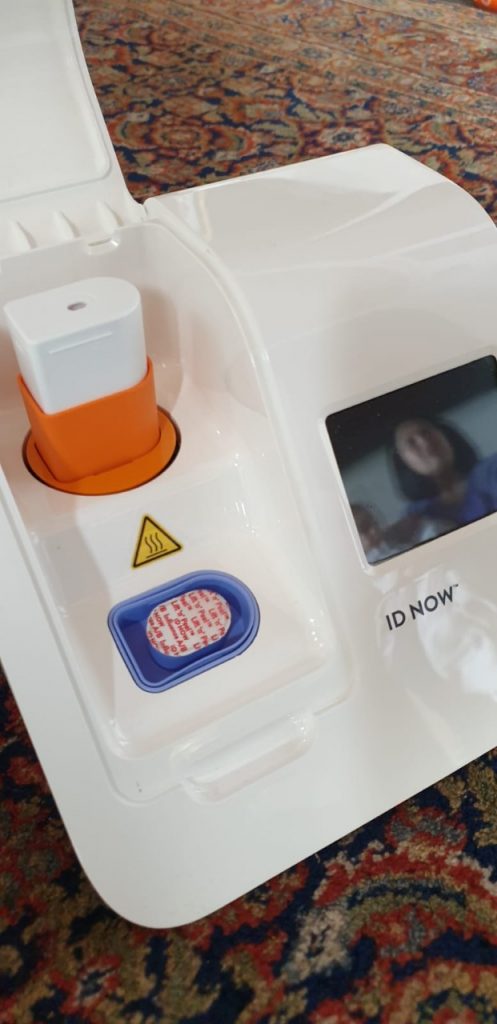Ischemic brain injury is a severe neurological complication, which accrues an immense activation of neuroinflammatory responses. Several strains of analysis steered the interconnection of gut microbiota perturbation with the activation of proinflammatory mediators. Intestinal microbial communities additionally interchange info with the brain by varied afferent and efferent channels and microbial by-products. Herein, we focus on the totally different microelements of gut microbiota and its reference to the host immune system and how change in immune-microbial signatures correlates with the stroke incidence and post-injury neurological sequelae. The activated inflammatory cells enhance the manufacturing of proinflammatory cytokines, chemokines, proteases and adhesive proteins which might be concerned in the systemic irritation, blood brain barrier disruption, gut dysbiosis and aggravation of ischemic brain injury. We recommend that fine-tuning of commensal gut microbiota (eubiosis) might regulate the activation of CNS resident cells like microglial, astrocytes, mast cells and pure killer cells.
The cornea is a novel tissue that performs the specialised activity of permitting mild to penetrate for visible interpretation. To accomplish this, the ocular floor requires a definite immune atmosphere that’s achieved by distinctive structural, mobile and molecular elements. Not solely should the cornea have the ability to fend off invasive infectious brokers but in addition management the inflammatory response as to keep away from collateral, and doubtlessly blinding injury; significantly of post-mitotic cells comparable to the corneal endothelium. To fight infections, each innate and adaptive arms of the inflammatory immune response are at play in the cornea. Dendritic cells play a vital position in coordinating each these responses in order to fend off infections. On the different facet of the spectrum, the ocular floor can also be endowed with a spread of anatomic and physiologic elements that support in regulating the immune response to forestall extreme, doubtlessly damaging, irritation. This attenuation of the immune response is termed immune privilege. The steadiness between professional and anti-inflammatory reactions is vital for preservation of the useful integrity of the cornea.
Moonlighting Proteins Are Important Players in Cancer Immunology
Plasticity and adaptation to environmental stress are the fundamental options that tumor and immune system share. Except for intrinsic and high-defined properties, most cancers and immune cells want to beat the opponent’s defenses by activating simpler signaling networks, primarily based on widespread parts comparable to transcriptional elements, protein-based complexes and receptors. Interestingly, rising proof level to an rising quantity of proteins succesful of performing various and unpredictable features. These multifunctional proteins are outlined as moonlighting proteins.
During most cancers development, a number of moonlighting proteins are concerned in selling an immunosuppressive microenvironment by reprogramming immune cells to help tumor development and metastatic unfold. Conversely, different moonlighting proteins help tumor antigen presentation and lymphocytes activation, resulting in a number of anti-cancer immunological responses. In this mild, moonlighting proteins could possibly be used as promising new potential targets for enhancing present most cancers therapies. In this assessment, we describe in particulars 12 unprecedented moonlighting proteins that in most cancers development play a decisive position in guiding cancer-associated immunomodulation by shaping innate or adaptive immune response.
Inside the Undergraduate Immunology Classroom: Current Practices that Provide a Framework for Curriculum Consensus
Although immunological analysis has turn into more and more essential in current many years for understanding infectious and immune-mediated illnesses, immunological pedagogy at the undergraduate stage has lagged behind in experiences of evidence-based scholarship. To handle the want for a renewed emphasis on immunology schooling and to explain the present standing of undergraduate schooling in immunology, a web based survey of instructors with expertise in instructing immunology was carried out. The survey investigated the results of instructors’ stage of instructing expertise, goal scholar inhabitants, and course elements on the emphasis given to sure immunology subtopics in their programs.
Instructor instructing expertise and present position in instructing influenced the proportion of time allotted to lab methods, medical matters, and evolutionary elements, however kind of establishment (undergraduate and graduate degree-granting establishments) didn’t have an effect on course content material or emphasis on subtopics. Topics that obtained the best emphasis had been the adaptive immune system, the innate immune system, host-pathogen interactions, and molecular mechanisms. Vaccines, hypersensitivity, autoimmunity, and important immunology methods had been ranked barely decrease, whereas matters comparable to evolution, metabolism and antibody purification obtained the least emphasis. Inclusion of a lab part elevated time given to lab-related and medical matters however didn’t have an effect on the perceived significance of varied scientific competencies. These knowledge describe present curricular practices of instructors who’ve expertise instructing immunology and inform curricular priorities and course design frameworks for undergraduate immunology schooling.
Multinucleate syncytialized trophoblast is discovered in three types in the human placenta. In the earliest levels of being pregnant, it’s seen at the invasive forefront of the implanting embryo and has been known as primitive trophoblast. In later being pregnant, it’s represented by the immense, multinucleated layer masking the floor of placental villi and by the trophoblast big cells discovered deep inside the uterine decidua and myometrium. These syncytia work together with native and/or systemic maternal immune effector cells in a effective steadiness that permits for invasion and persistence of allogeneic cells in a mom who should retain immunocompetence for 40 weeks of being pregnant.
[Linking template=”default” type=”products” search=”Thyroid Stimulating Hormone Enzyme Immunoassay Test Kit” header=”3″ limit=”116″ start=”2″ showCatalogNumber=”true” showSize=”true” showSupplier=”true” showPrice=”true” showDescription=”true” showAdditionalInformation=”true” showImage=”true” showSchemaMarkup=”true” imageWidth=”” imageHeight=””]
Maternal immune interactions with syncytialized trophoblast require tightly regulated mechanisms that will differ relying on the location of fetal cells and their invasiveness, the nature of the surrounding immune effector cells and the gestational age of the being pregnant. Some particularly mirror the distinctive mechanisms concerned in trophoblast cell-cell fusion (aka syncytialization). Here we are going to assessment and summarize a number of of the mechanisms that help wholesome maternal-fetal immune interactions particularly at syncytiotrophoblast interfaces.


